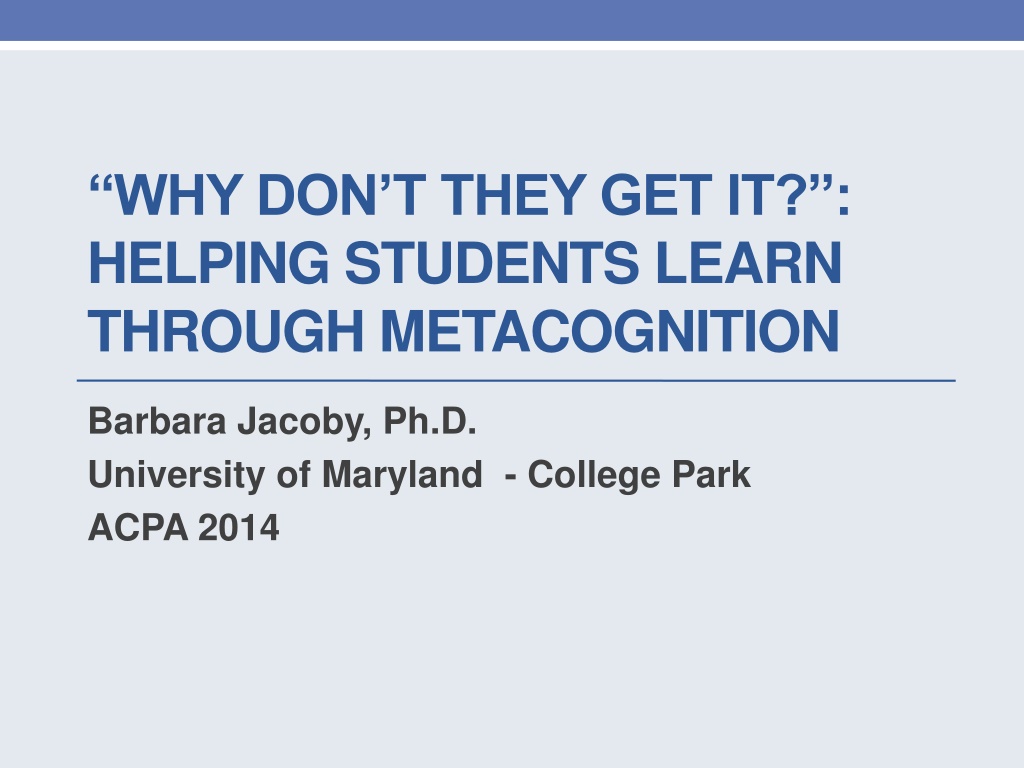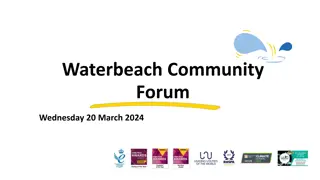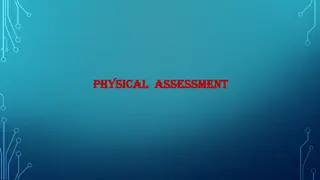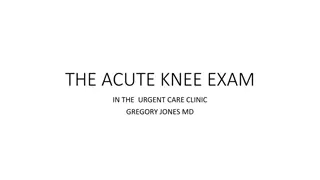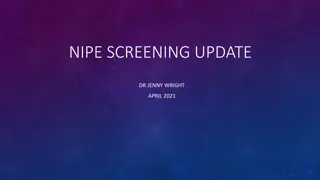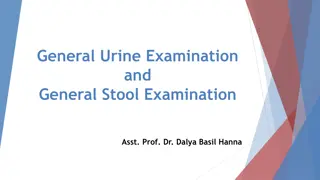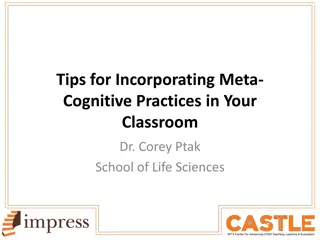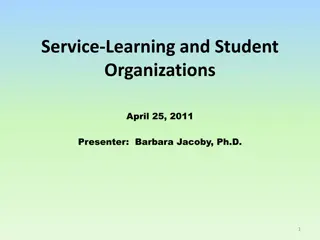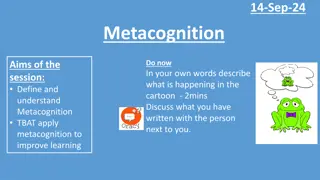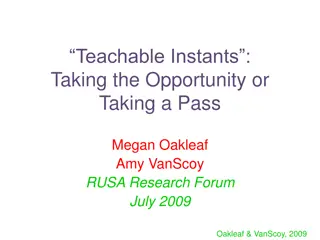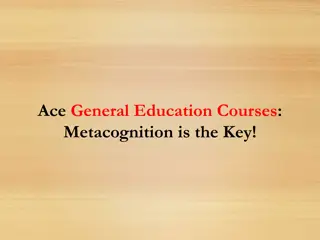Enhancing Student Learning Through Metacognition: A Critical Examination
Explore the challenges students face in learning, the importance of metacognition in improving learning outcomes, and strategies to address mislearning behaviors. Reflect on the critical role of reflection and critical thinking in shaping students' learning experiences.
Download Presentation

Please find below an Image/Link to download the presentation.
The content on the website is provided AS IS for your information and personal use only. It may not be sold, licensed, or shared on other websites without obtaining consent from the author. Download presentation by click this link. If you encounter any issues during the download, it is possible that the publisher has removed the file from their server.
E N D
Presentation Transcript
WHY DONT THEY GET IT?: HELPING STUDENTS LEARN THROUGH METACOGNITION Barbara Jacoby, Ph.D. University of Maryland - College Park ACPA 2014
45% of Students Dont Learn Much in College Huffington Post, August 24, 2013
Too Little Critical Thinking in College Chicago Tribune, March 25, 2012
Are College Students Actually Learning Anything? Chronicle of Higher Education, January 18, 2011
Metacognition is: higher-order thinking about how we learn as well as how effectively or well we are learning.
Metacognition is: planning how to approach a given learning task, monitoring comprehension, and evaluating progress toward the completion of a task.
Critical Reflection is the active, persistent and careful consideration of any belief or supposed form of knowledge in the light of the grounds that support it and the further conclusions to which it tends. --John Dewey, How We Think, 1916
Reflection What is an example of something your students just didn t get Why do you think they didn t get it?
How Do Students Mislearn? Amnesia : They forget. Fantasia : They think they know.
How do Students Mislearn? Inertia : They don t use ideas. Stagnatia : Their thinking stagnates for lack of challenge.
Strategies: Amnesia Sticky Teaching simplified, well organized key points clearly identified stick new material to what they know uses the element of surprise
Strategies: Fantasia Use scaffolding. Sequence presentation of material. Assess learning before it is needed. Go from simplest to most complex. Let them know what s important. Provide structures for learning.
Strategies: Inertia Engage students in experiential learning inside and outside the classroom
Strategies: Stagnatia Meet students where they are. Engage them in critical reflection. Scaffold reflections. Build a consciousness bridge.
Reflection Why are you a student affairs professional?
Metacognitive Reflection Why does it matter to know why?
Teaching is leading students into a situation from which they can only escape by thinking.
References and Resources Arum, R., and Roksa, J. Academically Adrift: Limited Learning on College Campuses. Chicago: University of Chicago Press, 2011. Baxter Magolda, M. B. Teaching to Promote Holistic Learning and Development. In M. B. Baxter Magolda (ed.), Teaching to Promote Intellectual and Personal Maturity: Incorporating Students Worldviews and Identities into the Learning Process, New Directions for Teaching and Learning, no. 82, San Francisco: Jossey-Bass, 2000. Dewey, J. How We Think. Buffalo, N. Y.: Dover, 1916.
King, P. M. & Kitchener, K. S. Developing Reflective Judgment. San Francisco: Jossey-Bass, 1994. Kolb, D. Experiential Learning: Experience as the Source of Learning and Development. Englewood Cliffs, N.J.: Prentice Hall, 1984. Jacoby, B. Service-Learning Essentials: Questions, Answers, and Lessons Learned. San Francisco: Jossey-Bass, in press. (Includes thorough discussion of critical reflection.) Shulman, L. S. Taking Learning Seriously. Change, 1999, 31(4), 10- 17. Sweller, J. Cognitive Load Theory, Learning Difficulty, and Instructional Design. Learning and Instruction, 4(4),1994, 295-312.
Presenter: Barbara Jacoby, Ph.D. Faculty Associate for Leadership & Community Service-Learning Adele H. Stamp Student Union University of Maryland bjacoby@umd.edu
